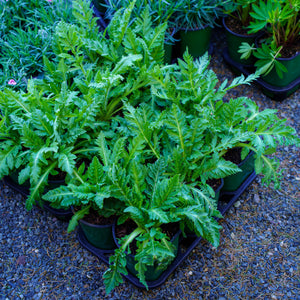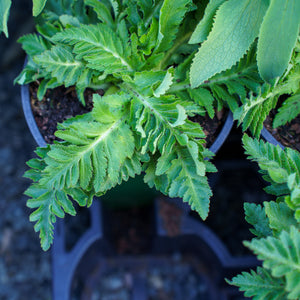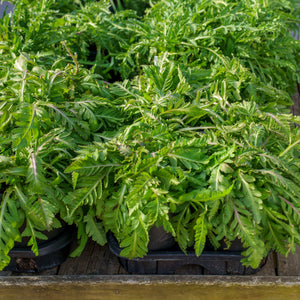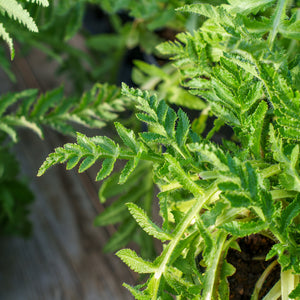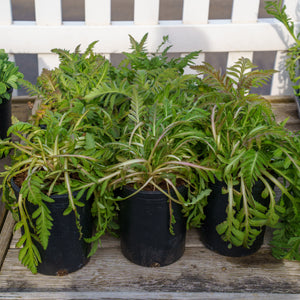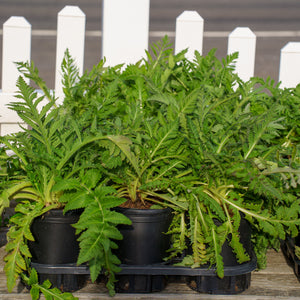The Papaver Guide
Papaver, more commonly known as poppy, is a classic garden favorite admired for its bold, crinkled petals, central dark eye, and papery elegance. Whether grown for their striking ornamental value or their contribution to pollinator gardens, poppies make a vibrant statement in late spring and early summer borders. With their silken petals and vivid hues, Papaver varieties add a painterly softness and texture to mixed beds, meadows, and cottage-style gardens.
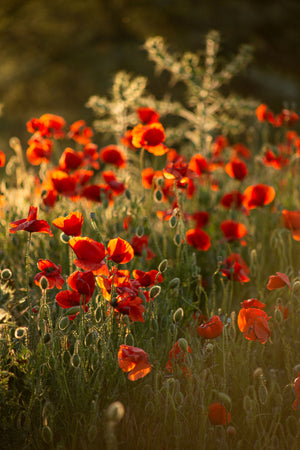
About
The Papaver genus encompasses over 70 species, but most cultivated garden varieties fall into two main categories: Papaver orientale (Oriental poppy) and Papaver nudicaule (Iceland poppy).
- Oriental Poppies (Papaver orientale) are long-lived, herbaceous perennials that form bushy clumps of bristly foliage and tall stems topped with large, crepe-paper-like blooms. Varieties like 'Royal Wedding', 'Patty's Plum', 'Princess Victoria Louise', and 'Central Park' showcase a diverse palette of coral, plum, pink, orange, and white.
- Iceland Poppies (Papaver nudicaule) are shorter-lived perennials (often grown as annuals or biennials) native to Arctic regions. They bloom prolifically with dainty, lightly fragrant flowers in pastel shades. Selections like 'Spring Fever Orange' and 'Wonderland Mix' offer soft charm for containers or front-of-border plantings.
Poppies are prized not only for their visual appeal but also for their wildlife support, attracting bees and early pollinators. Once established, they are low maintenance and drought tolerant.
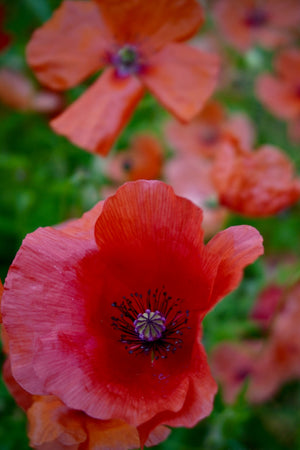
PLANTING
Growing Papaver successfully begins with choosing the right spot and understanding their seasonal rhythms:
- USDA Hardiness Zones: Papaver orientale thrives in Zones 3–7. Papaver nudicaule prefers Zones 2–7 but is often treated as an annual or biennial.
- Soil: Well-drained, moderately fertile soil is ideal. Avoid wet or heavy clay soil, which can lead to rot.
- Sunlight: Full sun (6+ hours) is essential for strong stems and abundant blooms.
- Spacing: Space plants 12–18 inches apart to allow for airflow and prevent fungal issues.
- Planting Time: Plant bareroot or container-grown oriental poppies in fall or early spring. Iceland poppy seeds should be sown in early spring or late fall.
Note: Oriental poppies go dormant in midsummer after blooming. Interplant with later-season perennials to fill the visual gap.
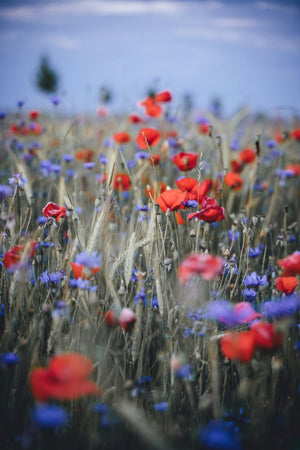
CARE
Papaver is easy to grow with minimal intervention once established, especially in well-draining soil and sunny locations:
- Watering: Moderate water during active growth and bloom. Once established, oriental poppies are drought tolerant and dislike soggy conditions.
- Fertilizing: Apply a balanced, slow-release fertilizer in early spring. Over-fertilization can result in excessive leaf growth and fewer flowers.
- Deadheading: Remove spent blooms to encourage further flowering and prevent unwanted reseeding.
- Pruning: After flowering, allow the foliage to yellow and die back naturally. Cut to the ground once fully dormant.
- Staking: Taller cultivars like 'Beauty of Livermere' or 'Pinnacle' may benefit from discreet support in windy sites.
Avoid dividing Oriental poppies unless necessary, as they develop long taproots and dislike disturbance.
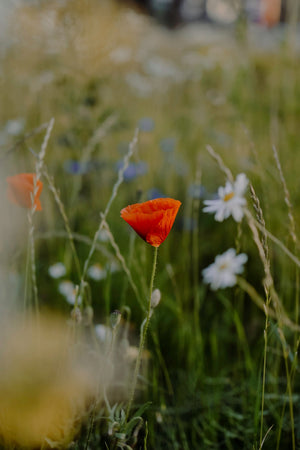
HOW TO USE
Poppies bring vibrant color and texture to spring gardens and can be used in a range of design styles:
- Mixed Borders: Plant with hardy geraniums, salvias, or ornamental grasses to camouflage post-bloom dormancy.
- Pollinator Gardens: Poppies are early nectar sources for bees. Combine with columbine, alliums, and early irises.
- Cottage Gardens: Their old-fashioned charm pairs beautifully with delphiniums, lupines, and foxgloves.
- Meadow Gardens: Include 'Pizzicato Mix' or 'Carnival' in wildflower plantings for a loose, naturalistic feel.
- Cut Flower Beds: Though short-lived in the vase, poppies make spectacular cut flowers if harvested in bud stage and seared to seal the stems.
They contrast beautifully with peonies, coreopsis, or nepeta for layered seasonal interest.
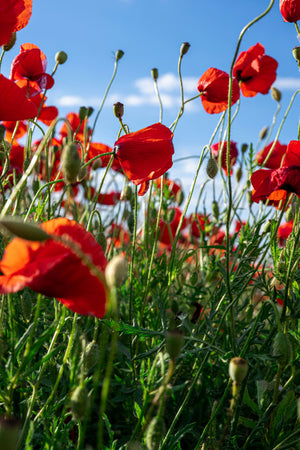
COMMON QUESTIONS
- How to grow papaver? Provide full sun, well-drained soil, and a cool climate for best bloom performance. Sow seeds shallowly or transplant carefully.
- Are papaver annuals or perennials? Papaver orientale is perennial. Papaver nudicaule is a short-lived perennial often grown as an annual or biennial.
- Are papaver toxic to dogs? Yes, most parts of the plant are considered toxic to dogs if ingested.
- Are papaver toxic to cats? Yes, poppies can be toxic to cats, potentially affecting the nervous system if consumed.
- Do deer eat papaver? Poppies are generally deer resistant due to their bitter sap and hairy foliage.
- Do rabbits eat papaver? Rabbits usually avoid papaver, but young seedlings may be nibbled in early spring.
Conclusion
Papaver adds a bold and whimsical flair to the spring garden, providing vivid, crepe-like blooms that sway in the breeze and delight pollinators. Whether you favor the stately presence of Oriental poppies or the delicate, fluttering nature of Icelandic varieties, these plants reward patient gardeners with early-season drama and color. Choose the right companions and site conditions to help poppies shine—and to seamlessly transition your garden through the seasons.
The Papaver Collection
Sold Out

